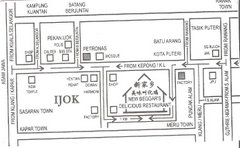RFID stands for Radio Frequency IDentification. RFID technology is using radio waves to automatically identify objects or even human being and animals. It is pretty similar to the bar code identification system: RFID tag/card and RFID tag reader is equalvalant to bar code and bar code scanner. However, one of the great advantage of RFID technology is that we don't need to have the "line-of-sight" scanning for the RFID reader to read the RFID tag/card as what is required in bar-code idenfication system. Thus, RFID cards also known as "contactless card" or "smart tag".
RFID tag consists of an Integrated Circuit (IC), which attached to an antenna. The IC is used to store the data/information, while the antenna is used to transmit/receive or transmit and receive data. RFID tag can be in various kinds of form and sizes depends on its functions. For a passive RFID tag which is read-only, the size can be as small as a grain of rice. The RFID reader is just a radio frequency receiver and transmitter that is control by a microprocessor. Information is sent-to and read from RFID tag by using the RFID reader.
It is interesting to know that the first e-Passport which implement the RFID tag is issued by Malaysia in year 1998. In addition to information also contained on the visual data page of the passport, Malaysian e-passports also record the travel history (time, date, and place) of entries and exits from the country.
Subscribe to:
Post Comments (Atom)



2 comments:
Is there any other example which using the RFID ?
in the library, replace the bar code attached to the book. Using RFID, the books is more easy to track and manage.
heard that its even can be implent in human body, -0-!
Post a Comment